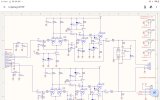DanielT
Major Contributor
- Thread Starter
- #21
Sorry, that was not the intention. I'll put it back in.Yes. A lot of unnecessary complication, and a lot of components that aren't really doing anything. I see you took out the schematic in an edit.
You could certainly be right in what you say. I don't know what he's up to. He's a technical expert like you.
In practice, nothing that worries me because I won't be building that tube pre amp.
Edit:
OT.However, a DIY OP based pre amp with remote and built-in DAC would be fun to try. I think, anyway.
Just for fun, for example this Apple USB-C adapter plus some pre amp. Could probably be a fun project.
Amir:
"Note that my testing is all on Windows. I attempted to test on my Samsung S8+ and got odd results. Using both Google dongles, all they did was route the not so good sound of the internal DAC through the dongle (???). With Apple dongle I got music but level was very low. So if you plan to use the Apple dongle on an Android phone, you should do some compatibility testing."
Then you should add a pre amp. That should fix that problem. Maybe.
If I ever try to build something like that, I'll create a thread about it. Not something I prioritize now.

Review: Apple vs Google USB-C Headphone Adapters
This is a review, detailed measurements and comparison of Apple's USB-C adapter to the current and last version of Google Pixel headphone adapters. The Apple adapter costs just $9 including one day shipping for free. The Google dongle costs $12. Not that any of these are large by any stretch...
 audiosciencereview.com
audiosciencereview.com
Attachments
Last edited:


